The art of Bonsai is a profound expression of nature’s beauty, embodying the quiet strength and resilience of trees. One of the striking elements that lend Bonsais their rugged appeal is the presence of Jin or deadwood. This artistic feature charmingly imitates the effects of weathering and ageing, intrinsic to trees in their natural setting.
This exhaustive guide seeks to demystify the art of creating Jin, exploring its historical context and role in Bonsai design, while also elucidating the choice of suitable trees, necessary tools and carving techniques for Jin, and practical steps to create it. With this knowledge at your disposal, the goal is to inspire and empower you to undertake this transformation with confidence and craft a Bonsai tree that narrates a captivating story of time and resilience.
Understanding Jin in Bonsai
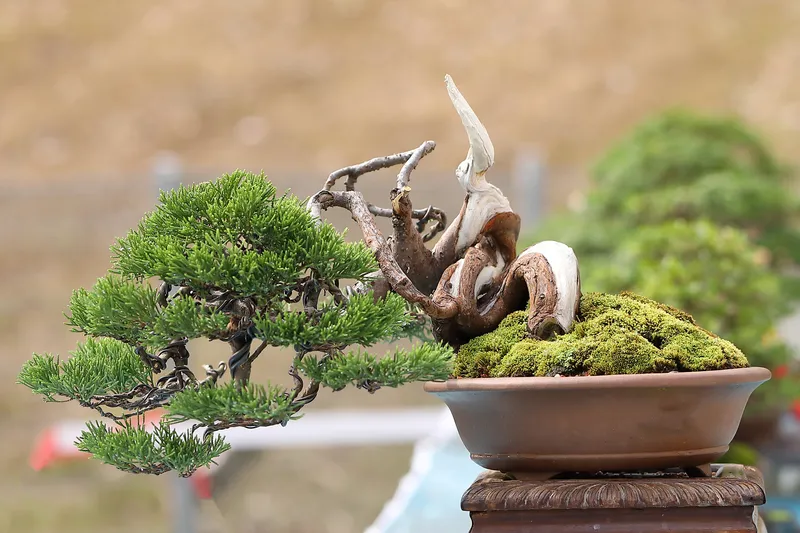
Understanding Jin in Bonsai
Jin, translated literally as “deadwood,” is a fundamental component in the aesthetic design of a Bonsai tree. Bonsai artists often incorporate Jin in their designs to represent the natural aging process and weathering of a tree, creating a sense of history and depth in the overall appearance of the Bonsai.
The concept of Jin is engrained in the philosophy of Wabi-Sabi, a Japanese aesthetic centered on the acceptance and beauty of imperfection and impermanence. Jin captures the elemental forces of nature, representing the struggle the tree goes through in its lifespan. Deadwood features, therefore, embody the transience, irregularity, and imperfection that Bonsai trees exhibit.
The Role of Jin in Bonsai Design
In Bonsai artistry, adding Jin creates a compelling narrative about the tree’s past. It serves as an intriguing twist in a Bonsai’s storyline – every crack, break, and weathered spot is a testament to time and endurance, contributing to the tree’s unique character. In addition, it also helps to balance the tree’s design, often acting as a counterweight to its live growth.
Jin isn’t always a necessary feature in every Bonsai tree design, and the extent to which it is employed can vary greatly. In some instances, a Bonsai may feature many prominent Jins, while in other cases, the artist might opt for subtler, less defined deadwood formations.
Creating Deadwood Features in Bonsai
The process of creating a Jin involves stripping the bark off a chosen part of the tree, thereby killing the branch and leaving it exposed to the elements. This gradual exposure to sunlight, rain, and wind slowly bleaches the Jin, giving it a natural, weathered look. However, creating a Jin requires technical knowledge and a gentle hand, as reckless handling can harm the tree.
Creating Jin involves tools such as Jin pliers, bonsai carving tools, and lime sulfur to preserve the wood and introduce the signature white color of deadwood. The process generally starts with selecting a branch or part of the trunk that fits within the Bonsai’s overall design and narrative. The artist will then peel away the bark from this area, taking care to avoid damaging neighboring sections of live growth.
Mastering deadwood techniques is not something accomplished overnight, it requires a deep understanding of tree biology, a persistent practice, and studying under more experienced bonsai practitioners. Knowledge of different tree species is also crucial, as not all trees respond the same to the creation of Jin.
Significance of Mastering Jin
Proficiency in the technique known as Jin provides bonsai artists with an illustrative method to represent the resilience and maturity of trees. Mastering the creation of Jin in Bonsai sculpting enriches the artwork, infusing it with the powerful narrative of strength and survival, even though it features remarkable elements of death.
Tools and Techniques for Creating Jin
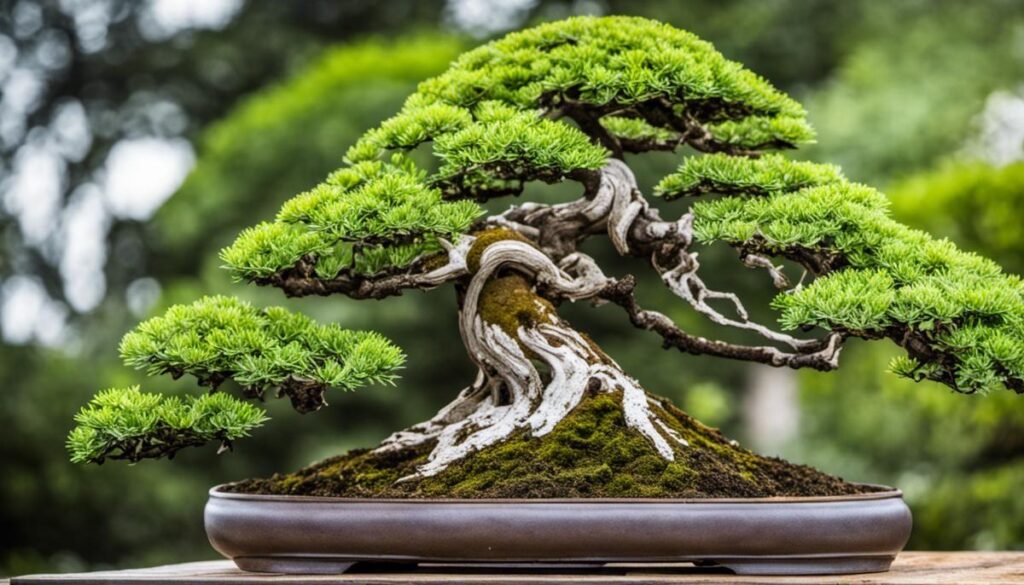
Essential Tools for Jin Creation
Execution of Jin, the artistry of sculpting deadwood features on Bonsai, requires a range of specific tools. These encompass Jin pliers, a variety of carving tools, die grinders accompanied by bits, wire brushes, stripping knives, and a wood bleaching product.
Jin pliers, characterized by cylindrical boundaries and slender points, serve as an essential instrument for removing bark and wood fibers from the tree’s trunk or branches. This tool is vital in molding the tree to simulate the effects of aging.
Carving tools like chisels and gouges are typically employed to add intricate details to the Jin. These tools, with their flat to round edges, can shape the wood delicately, introducing the intended texture to the deadwood.
Die grinders with specialized bits prove handy in the formation of larger Jin features by effectively eliminating superfluous wood. Wire brushes compliment the process by cleaning the carved Jin, removing dust and minor fibers, which enhances the final look.
Lastly, stripping knives are utilized to peel off the bark and cambium layer to reveal the underlying wood, thereby facilitating more complex carving.
Techniques for Creating Jin
There are different techniques involved in the creation of Jin. The basic steps involve selecting and exposing the area that will be transformed into a deadwood feature, carving and shaping to simulate aged natural effects, and bleaching the finalized feature.
In selecting and exposing the area of the tree, it’s important to choose the branch or trunk carefully. This decision can greatly affect the overall design and balance of the Bonsai. Once selected, the bark is stripped away using a stripping knife or Jin pliers to expose the wood beneath.
The exposed wood is then carved and shaped using a mixture of carving tools. This process often involves replicating natural effects like weathering, splintering, or jags, to convey age and character to the tree.
Die grinders are especially useful in the carving and shaping phase, as they provide the force necessary to remove large sections of wood quickly and effectively. Handheld carving tools then come in to refine these rough carvings and add detail.
Treatment and Maintenance of Jin
Once the Jin feature is carved and shaped, it’s not yet finished. A vital step is bleaching the wood. This is done to mimic the natural bleaching effect caused by sunlight in nature, it also helps to prevent decay and infestation by pests. To do this, a bleaching agent can be applied to the wood which will turn it white over time.
The finished Jin then requires ongoing maintenance. Light sanding and re-application of bleaching agent may occasionally be required to maintain the Jin’s appearance and health.
Unlocking the Artistry of Jin in Bonsai
The mastery underlying the creation of Jin in bonsai artistry intertwines a grasp of your tools, a honing of your technique, and a patience that is woven into careful planning and execution of your design. It is a craft that demands an investment of time and practice, yet the payoff is a significantly augmented artistic impression and narrative provided by your Bonsai tree.

Choosing the Right Tree for Jin
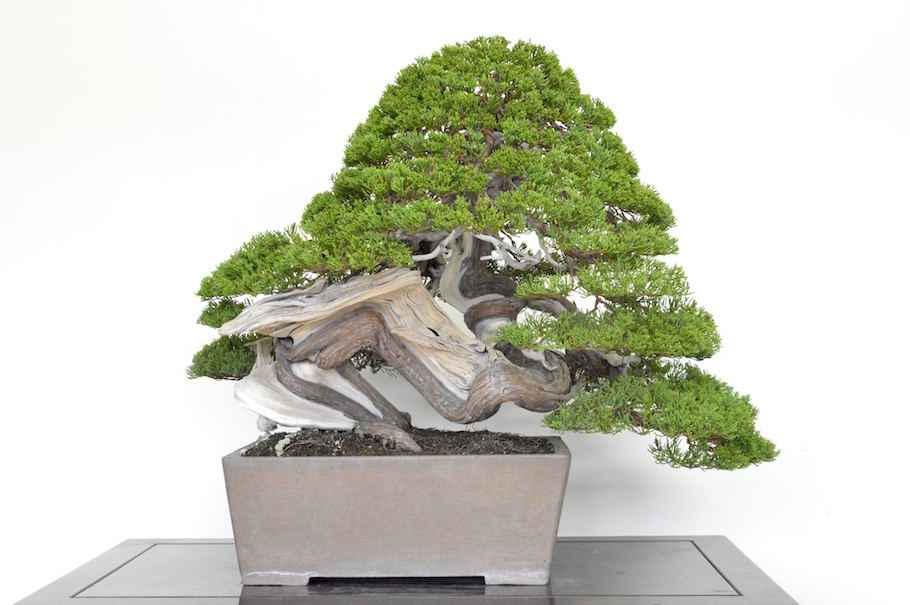
Jin in Bonsai: The Quest for Identifying the Perfect Tree
The artistic grace of deadwood features, known as jin, in bonsai is married to the quintessential understanding and choice of the tree. This selection process essentially underpins a successful and compelling jin creation in your bonsai display.
The ideal candidates for showcasing jin features have a prerequisite: a wood hard enough to withstand decay, ensuring the deadwood features preserve their shape over a considerable length of time. Coniferous trees are often the top contenders, with pines (Pinus species), junipers (Juniperus species), and spruces (Picea species) reigning as popular options for presenting jin features.
Junipers are special favorites, extending an inherent predilection towards exhibiting deadwood in their natural environment. You can find several wild varieties flourishing with remarkable jin and shari (another form of deadwood feature), a result of enduring extreme weather conditions. Borrowing these features for your bonsai brings to life compelling miniature landscapes.
Pines, in contrast, offer a thick and rugged bark that adds a distinct aesthetic dimension to the bonsai. However, their growth characteristics and branch structure render challenging the creation of jin.
Whether it’s an old tree, a brittle branch, or natural bark shedding revealing the wood underneath, potential jin features are there to be found in these nature’s nuggets. To identify them is of high significance in the intricate art of bonsai jin.
Choosing a tree for creating jin also involves paying due attention to the tree’s style and shape. Trees with an informal upright, slanting, or semi-cascade style, owing to their irregular growth patterns, are generally well-suited for jin features. Yet, the individuality of each tree, its unique characteristics and growth habits need to be given due consideration.
An Introduction to Creating Jin
The process of mastering Jin, or the art of creating deadwood features on bonsai trees, demands more than just technical knowledge. It requires a discerning eye for the potential transformation within the tree, as well as a degree of patience and astute observation. Factors such as the age of the tree, its natural environment and species must be taken into account.
In essence, creating Jin in bonsai is about asserting the features of maturity, endurance, and survival, reflecting the true depth of nature’s resilience within these miniature masterpieces.
Steps to Creating Jin
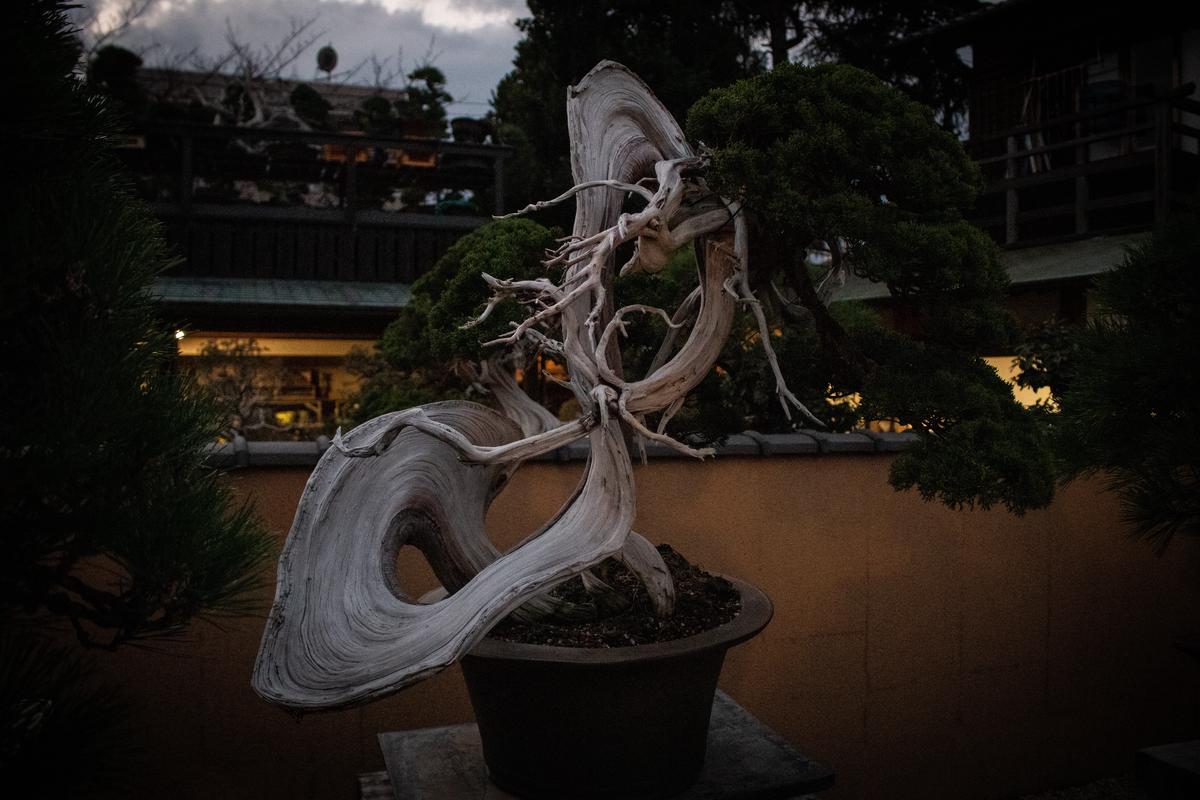
Photo by shiho_kam on Unsplash
Preparing and Planning for Jin
Creating Jin is initiated by thorough analysis of the tree and precise planning of the desired design. Your goal is to achieve as natural a look as possible, reminiscent of a tree weathered by elements over a long period of time. Envisage the potential end result, and identify the branches or parts of the trunk that would make convincing Jin. Always respect the narrative of the tree’s natural growth. This means considering elements such as its age, style, and the natural environment it is meant to represent.
Carving
Once the design is planned, the next step is the carving process. Using a set of bonsai tools, including concave pruners, carving knives, and wire brushes, remove the bark of the chosen branch or trunk section. Carefully trim off leaves and smaller branches, then slowly start scraping off the exterior layer of bark until you expose the lighter, inner wood.
Creating an Aged Look
After carving, the next step is making the jin look realistically aged. Continued scraping reveals grain lines in the wood that, when followed, can make the jin more realistic. To create cracks and natural damages of an old tree, use pliers to tear the wood. Wire brushes can be used to clean off sawdust and to further emphasize the grain. Some practitioners also use a blow torch for a few seconds over the jin to enhance the aged look. However, make sure to cool it immediately with water to prevent the wood from burning.
Preservation and Maintenance
The final stage of creating jin is preservation and maintenance. Without proper care, the exposed, dead branches can decay and jeopardize the entire tree. Thus, preserving your jin is essential. Apply a layer of lime sulfur over the jin after carving. This not only preserves the wood but also gives it a bleached white color typical of natural deadwood exposed to the elements.
In terms of maintenance, if the tree is outside, nature will take care of most of the work. Sunshine, rain, and wind will naturally age and bleach your jin over time. For indoor bonsai, semi-annual application of lime sulfur is usually sufficient to maintain your jin.
Engaging in the formation of a jin is an immersive artistic endeavor that demands dedication, patience and constant practice. Through a process of repetition and refinement, the mark of age and evidence of weathering can be enhanced, gradually elevating the sense of realism that each bonsai depicts.
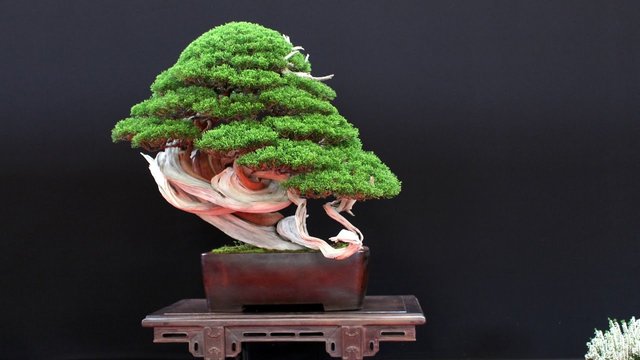
Tips for Mastering Jin
An Exercise In Perfect Balance
It’s the harmonious balance and proportionality of a Bonsai that truly captures its enchanting beauty. When sculpting the characteristic deadwood features, aptly known as Jin, the principle of balance remains pivotal. This equilibrium is achieved by ensuring that your designed Jin complements your Bonsai’s dimension, such as its height, width, and girth. Overemphasized or undersized Jins disrupt this equilibrium, resulting in an overall unbalanced appearance or an unimpressive, barely noticeable aspect, respectively.
Proper Bark Removal
The process of creating Jin essentially involves stripping a portion of the branch or trunk of its bark to expose the deadwood underneath. Proper removal of the bark is crucial to this process. You can use a sharp knife or a Jin plier to carefully peel away the bark along the length of the section you want to transform into your Jin. Make sure not to damage the surrounding bark while doing so, as this could harm your tree.
Guard Against Rot
Creating a Jin exposes the wood underneath, which can become a vector for rot if not properly treated. To prevent your Bonsai from rotting, you should treat the exposed wood with a wood hardener or a lime sulphur solution. Applying this once or twice a year should suffice. This not only preserves the wood but also enhances the aesthetic by giving your Jin a natural, aged look.
Find the Right Bleaching Solution
Finding the right bleaching solution is an important step in creating a Jin. Most Bonsai practitioners recommend using lime sulphur, which gives the Jin its distinct white color. Before applying it, ensure that the area is thoroughly dry. Apply the solution using a brush, ensuring to cover the entire Jin evenly. Keep in mind that the solution is potent and can harm live parts of your tree, so apply carefully to avoid contact with live bark or foliage. Lime sulphur can also be harmful to the human skin, so use rubber gloves for protection.
Mastering the Art of Jin
Mastering Jin is a process that requires patience, precision, and lots of practice. Every tree is unique and requires a different approach. Always remember, when working on your Bonsai, the health of the tree is paramount. Avoid creating Jin on young trees as it can significantly impair their growth. Moreover, the creation of Jin should always be accompanied by appropriate aftercare to prevent infections and ensure the health and longevity of your Bonsai.
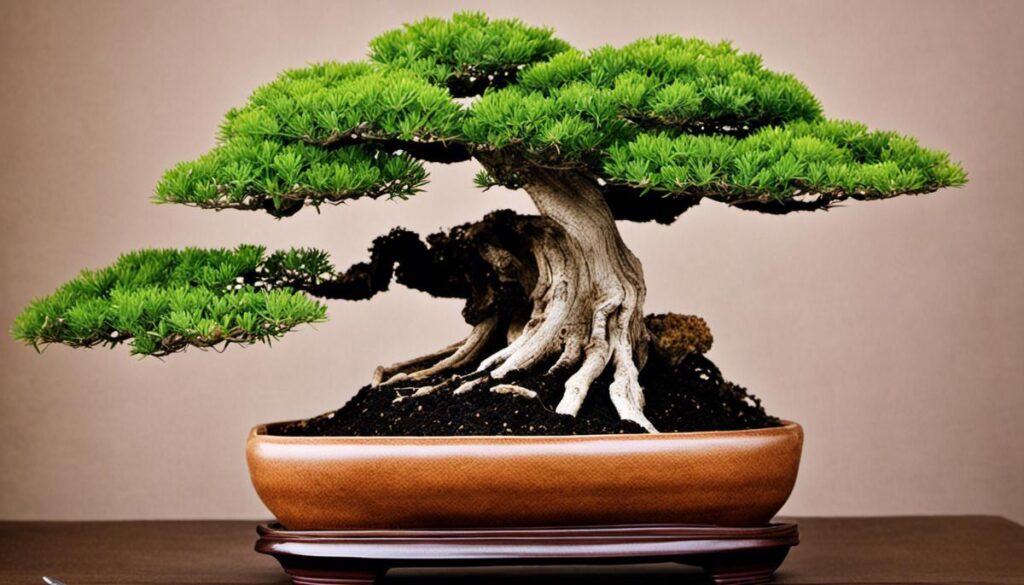
Embarking on the journey of creating Jin in your Bonsai gives you an opportunity to deepen your bond with nature and express your creative vision. It is an intricate process that requires patience, precision, and practice, but the end result – a Bonsai tree featuring beautifully weathered Jin – is worth the endeavor. By following the outlined techniques, making well-informed choices, and incorporating the expert tips shared, one can truly master the art of Jin in Bonsai. More than just an artistic skill, mastering Jin allows you to breathe a piece of your world into the miniature one inside your pot, skillfully carving the passage of time into your Bonsai, completing its tale of resilience and strength.
